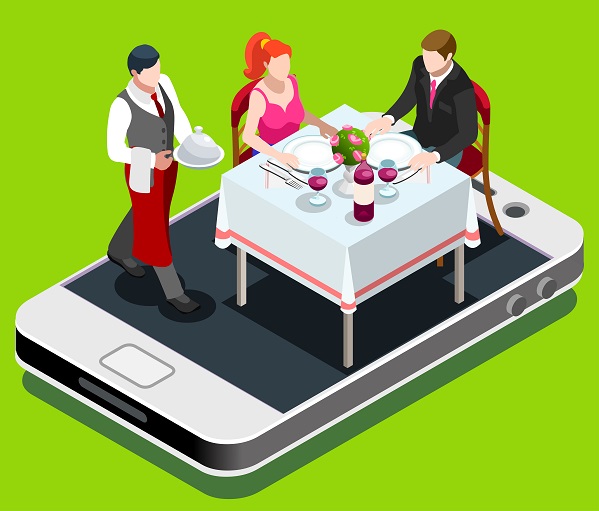From Wifi to Waffles (Bites & Bytes Part 2: The Diner Experience)
 Reading Time: 3 minutes
Reading Time: 3 minutes“Feed me!”
Isn’t that ultimately what a consumer wants from a restaurant, food truck, delivery service, or take-out window? It’s not that simple.
Not only does a consumer want to be satiated by food, he or she now expects (dare I say demands?) a seamless experience…from finding the exact taste he’s looking for…to reserving a table…to wait time…to payment. PLUS the experience of dining itself needs to be unique and memorable. And, because your diner is likely to be on his phone during the meal, you need to provide wifi.
My next post in this series will deal with some of the POS (point-of-sale) and marketing systems that enhance the diner experience AND benefit the business owner. The following piece is the “appetizer” of apps that directly serve consumers. The number of exhibitors in that category at the National Restaurant Association Show was supersized and I couldn’t possibly demo them all. So, here are just a few observations and shout-outs. (If I missed you, please be sure to get in touch and fill me in.)
- Yelp, the brand synonymous with customer reviews, not allows consumers to reserve seats directly from its app. They have gobbled up Turnstyle, which provides wifi to customers and also gives owners a source of customer data. Zenreach is also in that space, because smart companies have realized that consumer dining data is more valuable than Beluga caviar and Kobe beef. Says marketing technology executive Jim D’Arcangelo, “Technology leads to data which leads to greater customer intimacy and knowledge.” As restaurants embrace technology, they will better understand who’s visiting their establishments, when they’re going, and even what they are eating and drinking. Just as retailers recommend products to shoppers, more food service businesses are making specific offers to frequent diners via e-mail and text. They also use geo-targeting to draw in passers-by and out-of-towners.
- Time has a significant value to most consumers these days. That’s why Waitbusters developed the next generation solution, replacing dispassionate light-up buzzers with an app that lets you (the diner) know exactly how much time you will need to wait for your seat and gives restaurants a way to keep you entertained and engaged while you’re standing-by. Again, communications becomes personalized.
- Have reservations? Not sure if you are feeling a burger or sushi? Don’t want to eat alone? Munchado, Wheedle, and Rezzit21 are among the new apps that are pulling up new chairs to compete with industry leader Open Table. You know that restaurant tech has become mainstream when new apps are disrupting the disruptors.
- Service no longer comes just with a smile. It comes with tech too. Wait and bar staff have cloud- and server-based systems that help them schedule shifts, serve faster, deliver checks and food quicker, and even take inventory. Paper menus are being gradually replaced by touch screens and self-service tablets. The kitchen doesn’t have to decipher handwriting. Digital menus also enable chefs to change-up their offerings instantaneously. Ran out of artichokes? No problem. Poof…they are gone! Pepper the robot (who I met at Collision) is now serving customers at Pizza Hut. That all translates to speed, accuracy, and potentially customer satisfaction. As a guest, you may see some of that tech, but much of it is still behind the scenes. (I’m whetting your appetite for my next post.)
- And what do we have for dessert? Customer reviews, of course! If you have a good experience or a bad experience with food these days, you are tempted to post, blog, tweet, Snap, Insta, and otherwise share it. Tapyness can be viewed as an “early warning system” for restaurant owners (replacing the old paper comment card). Diners provide pithy and immediate feedback as they leave a food venue and managers may know they have a problem before “disgusting meal” or “rude service” starts trending.
In summary, the phone is now as important as the fork in consumer dining habits. Smart business owners will simply use technology to serve customers better food, faster — freeing-up their human staff to deliver something that can never be replaced by a bot — hospitality!

